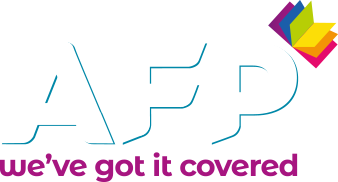More businesses are diving into the digital world. The pandemic has been the catalyst for the move to digital with remote working and the need to stay connected.
One of the biggest trends is the rise of digital printing. If you’re new to digital processes, you might not be 100% sure what digital printing involves. This week, we’re covering the basics of digital printing: what it is, how it works and how it’s different to more traditional methods.
Let’s dive in.
What is digital printing?
Digital printing involves printing from a digital-based image directly to a variety of media, for example a PDF or desktop publishing file. You don’t need to create any printing plates, which makes it much quicker and more efficient than traditional offset printing. Simply send the files directly to the digital printing press to print on paper, photo paper, canvas, fabric, synthetics, cardstock and other substrates.
Digital printing technology
Digital printing technology is very different from traditional offset printing. While offset printing uses wet ink and transfers the same image via printing plates, digital printing assembles the images ready for print. This information controls how much ink, toner and exposure is used to copy and print the image exactly.
Digital printers are, most commonly, inkjet or toner-based printers. An inkjet printer creates the image using wet ink on your chosen paper surface. A toner-based printer, however, uses dry powder to print the image.
Digital vs. traditional printing
As we mentioned before, the biggest difference between digital and traditional printing is that digital doesn’t use printing plates. Instead of using metal plates to transfer an image, digital printing presses print the image directly onto the paper or other chosen media substrate.
Digital printing comes with plenty of benefits, some of which you don’t get using more traditional printing methods.
One of the key advantages is efficiency. Because digital printing doesn’t need any pre-press procedures or plates, it’s much quicker to set up. That means as soon as you need to get the printing done, you can get it sorted there and then. Making it much easier to stick to tight deadlines.
This also makes digital printing much more cost effective because it doesn’t incur any of the additional costs required to create specific printing plates.
How versatile is digital printing?
Short answer? Very.
Digital printing machines can print on everything from thick cardstock, heavyweight papers and folding cartons to fabric, plastics and synthetic substrates. No matter what kind of material you’re printing on, you won’t be held back with digital printing.
In fact, digital printing is more versatile than traditional printing methods. As well as supporting over 3000 certified substrates, digital printers also offer advanced printing techniques, such as foil stamps, die cuts, and UV and aqueous finishes.
This means you can be more versatile with your business, meet changing consumer demands, keep up with moving trends and stay ahead of your competitors.
Ready to get started with digital print?
If you have more questions about getting started with digital print, AFP can help. For expert support and guidance, give us a call today.
